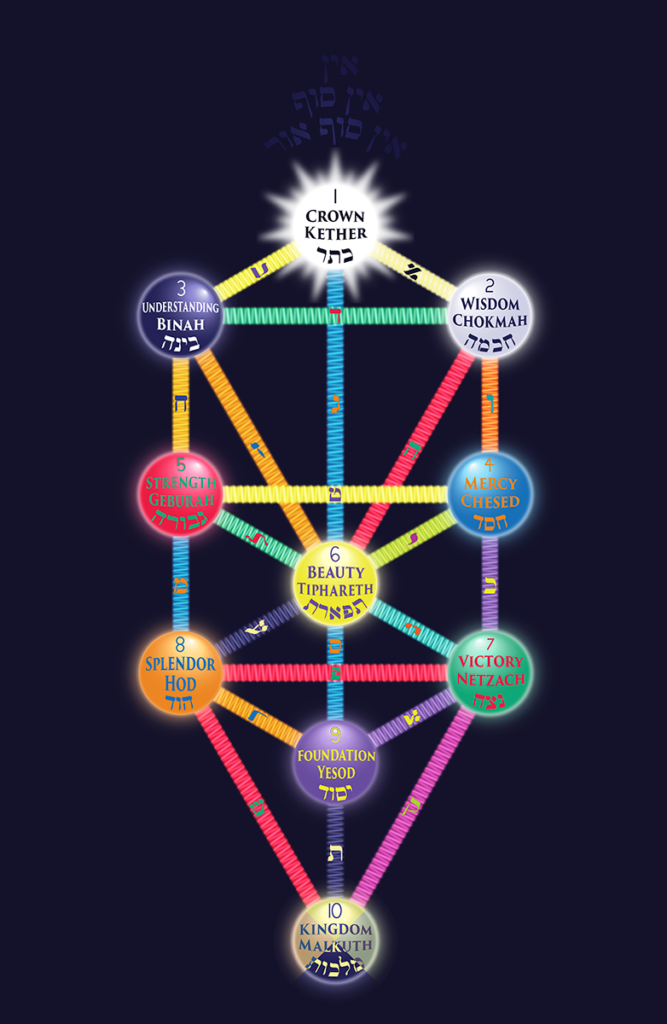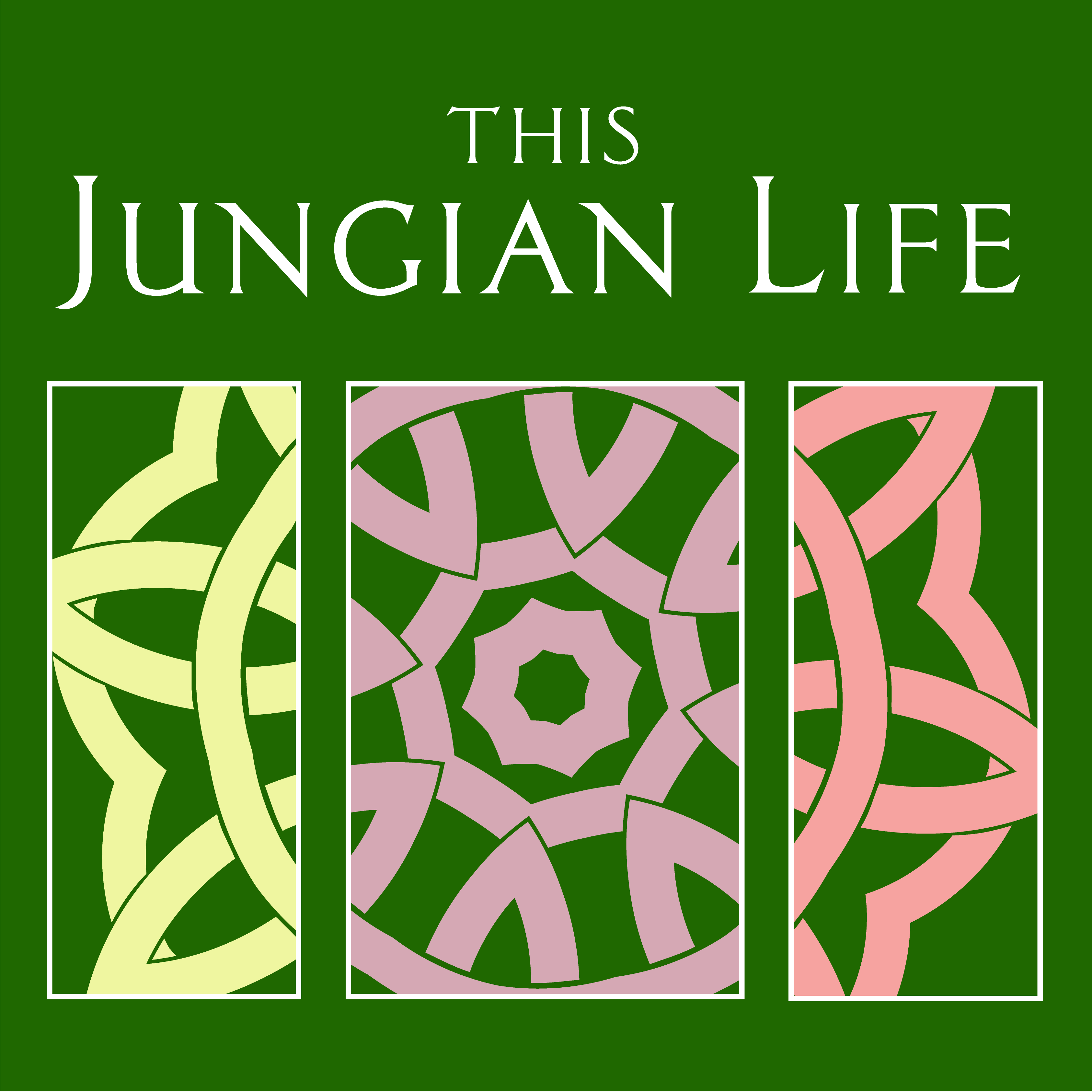
Kabbalah is an ancient Jewish mystical tradition that has captured the imaginations of people from widely diverse backgrounds, including Jung himself. Three weeks after his heart attack in 1944, Jung had an ecstatic vision, “…Everything around me also seemed enchanted…I myself was in Pardes-Rimonim, in the pomegranate garden where Tiferet and Malchut married. I also imagined myself as Rabi Shimon ben Yochai, whose mystical marriage was celebrated now. It looked exactly as the Kabbalists portrayed it. I cannot tell you how amazing it was…” Though Jung did not live long enough to explore the Kabbalah fully, his psyche was deeply affected by the images and philosophies which played an important role in his life during this crisis.
Like analysis, Kabbalistic methods cultivate an extraordinary receptivity to Self that illuminates the inner dimensions of the human soul, its unexplored potential, and our relationship to the divine. Its first written fragments surfaced in the 13th century, but the oral tradition reaches back millennia. Its primary symbol, the Tree of Life, reflects a rich cosmology that maps the progression of archetypal forces in the outer and inner world. It helps us track the flow of psychic energy as it descends from its animating source to archetypal image, thought, and finally to action. Like all images of the Self, it invokes the transcendental ordering principle that heals and facilitates individuation.
Here’s the dream we analyze:
“I’m in Putin’s inner circle. It’s attached to some other business place that I’m working in. I’m wearing a suit. He’s got an office, like in a 1920s socialist apartment building with tall ceilings. It’s not particularly high security, and I’m in it. The place is a bit messy. Putin is thin; he looks like the younger Putin, not the rounder face. One we see on TV. He’s getting medication out of boxes, and I see they are statins, and I figure he’s got heart trouble. I take a seat on a sofa, and we’re talking; I’m thinking about how vulnerable he looks, like a nice man; actually. I’m sensing that he trusts me, we have a good easy rapport. I’m wondering whether he knows I’m queer and what he would make of that, given the state of LGBTQ rights in Russia. I figure out that there are two Putins, this real one behind the scenes and the one on TV. The one on TV has a body double, but the rest of the world doesn’t know that. I wonder how I’m going to keep this from the world and whether it will ever come out that I know him and how I would justify that to the media. I go to the bathroom off his office, and Putin’s bath is running. I gather that he is going to have a bath. I go back into the office, smoke a cigarette on the sofa, and we talk some more, and then I leave. I go to another room. I kiss my friend A repeatedly on the face, whose name I get wrong. She tells me her name is something else. It’s the first time I’ve heard her tell me the name that she says she is hers. I know her by at least two other names. I accidentally kiss her on the lips. The other friend B is there too, and then I realized that I have kissed B, not A. B asks me whether I’ve been smoking cannabis because there is a really strong smell on my breath. I think about the cigarette I smoked in Putin’s office and wonder how it could have left such a strong smell.
REFERENCES:
Dion Fortune. The Mystical Qabalah. https://www.amazon.com/dp/157863752X/ref=cm_sw_em_r_mt_dp_CNHVRG5XVEK52RWZMASB?_encoding=UTF8&psc=1
Erich Neumann. The Essays of Erich Neumann, Volume 3: The Place of Creation. https://www.amazon.com/dp/0691603871/ref=cm_sw_em_r_mt_dp_TMA84417K13TPNWG4DGV?_encoding=UTF8&psc=1
Rabbi Aryeh Kaplan. Meditation and Kabbalah. https://www.amazon.com/dp/0877286167/ref=cm_sw_em_r_mt_dp_0HVCPYAXXW8DKHKYXMJJ
GIVE US A HAND!
Become our patron: https://www.patreon.com/ThisJungianLife
RESOURCES:
Learn to Analyze your own Dreams: https://thisjungianlife.com/enroll/
PAJA Advanced Clinical Practice Program: https://www.cgjungphiladelphia.org/assets/2022-2023-advanced-clinical-practice.pdf

Hi guys,
You may like Daniel Matt’s work. He’s the foremost Kabbalistic scholar in the US. I highly recommend him. He spent the last 18 years doing a new translation of the Zohar. He’s a professor at Union theological in Berkeley. Enjoy!!
Very interesting discussion. There is a good estoeric book on the Tarot written “anonymously” by a guy named Valentin Tomberg (eventually they traced it to him) called Meditations on the Tarot that approaches the Tarot as a deep mystical system that mirrors Kabbalah. Tomberg was an esoteric layman from i believe Estonia or somewhere but claimed to have gotten his knowledge from Romany people … it would be a good companion guide to the Kabbalah books that you mention.
I was also interested whether there might be any relation to the movement of energies through the Sephora to the movement of Kundalini through the Chakras and whether the two are synonymous. Also, the movement of energies through the stations of the Enneagram (used by Gurdieff and by the folks associated with the Diamond approach.
finally, i’ll suggest this talk.https://www.youtube.com/watch?v=kNw2VusH5sU
.which i happened upon last week when i was listening to your “Hansel and Gretel” episode and then went on a “Donald Kalsched” youtube tear. I thought this talk was a nice and elegant way to illustrating some of the same ideas that you refer to here in this talk. Kalsched uses the famous painting by Michelangelo on the Sistine Chapel to illustrate the “ego-self” axis concept. He talks alot about the need to gradually open up the synapse between “god’s world”…the inner world and the “world of Adam” the empirical world to let creativity, libido and all the joys of life flow. . As you point out, It’s these mystical traditions and their practices that offer us ways to do help do it. Kalsched incidentally talks about how some people have a very difficult time with that process due to past traumas…which Lisa points out…sometimes the self is very slow in showing up and needs some help to open up that synapse. Again, that points back to last weeks discussion on Hansel and Gretel.
Thank you, Joseph, for sharing your personal relationship with the Kabbalah with us. I believe Jung said in his 80th birthday interview that that the Rabbi Baer from Meseritz anticipated his whole psychology. I agree that it is unfortunate that Jung didn’t have the time to explore the Kabbalah more fully. Your experience with Michael made me thing of that great quote, “When the student is ready, the teacher appears.” When you spoke about linking the above and below, it made me think of the new Webb telescope and when the pictures came out, I thought to myself how great it would be to have a telescope that could look inward to our psyche. Then I thought that the great mystical traditions ARE the Web telescope of the psyche! And through technology (telescope) we are able to see the outward cosmos and with technology (internet, etc) we are now even more fully able to see the inward cosmos. As you said, we are now able to find out about the esoteric traditions online. So, it’s king of a beautiful image of the meeting of the above and below. Your comments about the act of listening also resonated with me because i have been practicing that more lately. We are so involved in talking and preparing and doing that we seldom really listen anymore. Listening requires focus and attention. One might think it is passive, but there really is an activeness in that passivity. It’s about cultivating a receptivity that is dynamic at the same time. It kind of reminds me of the listening required for active imagination. There is listening but participation as well. Thank you again for a wonderful episode. And thank you all for your courage to be open, vulnerable and authentic in an arena that can often be less than compassionate and welcoming.
Thank you so much for this episode and for all of them. I was deeply moved by Joseph’s story. This work is a great gift to the world!
You were talking about therapists using folk tales in their therapy. John Matthews has found that reading stories from the Grail legend has had a therapeutic effect.
Thanks for the podcast!
Another great book by Aryeh Kaplan: Jewish Meditation. A Practical Guide (1985) – not directly about Kabbalah, but a good starter before taking the big leap!